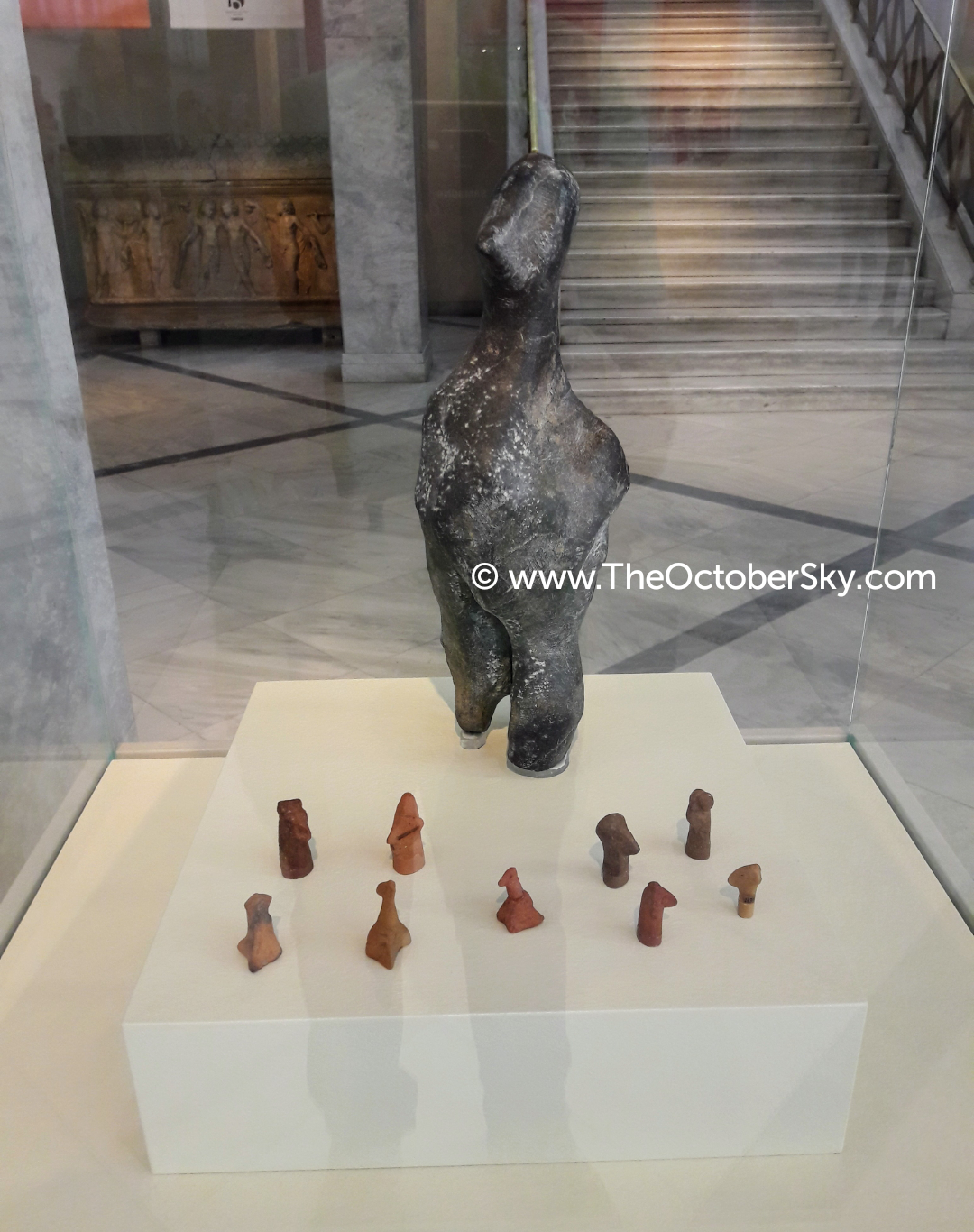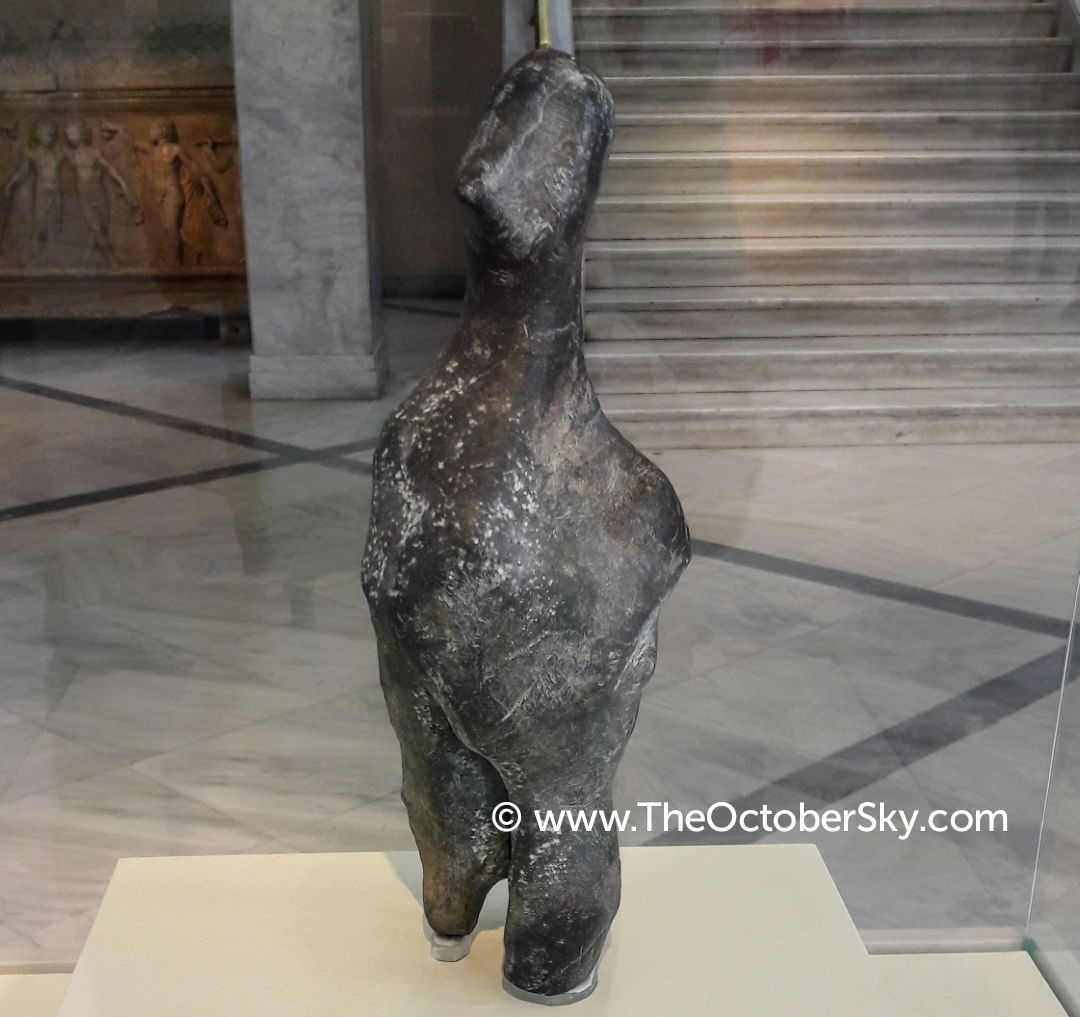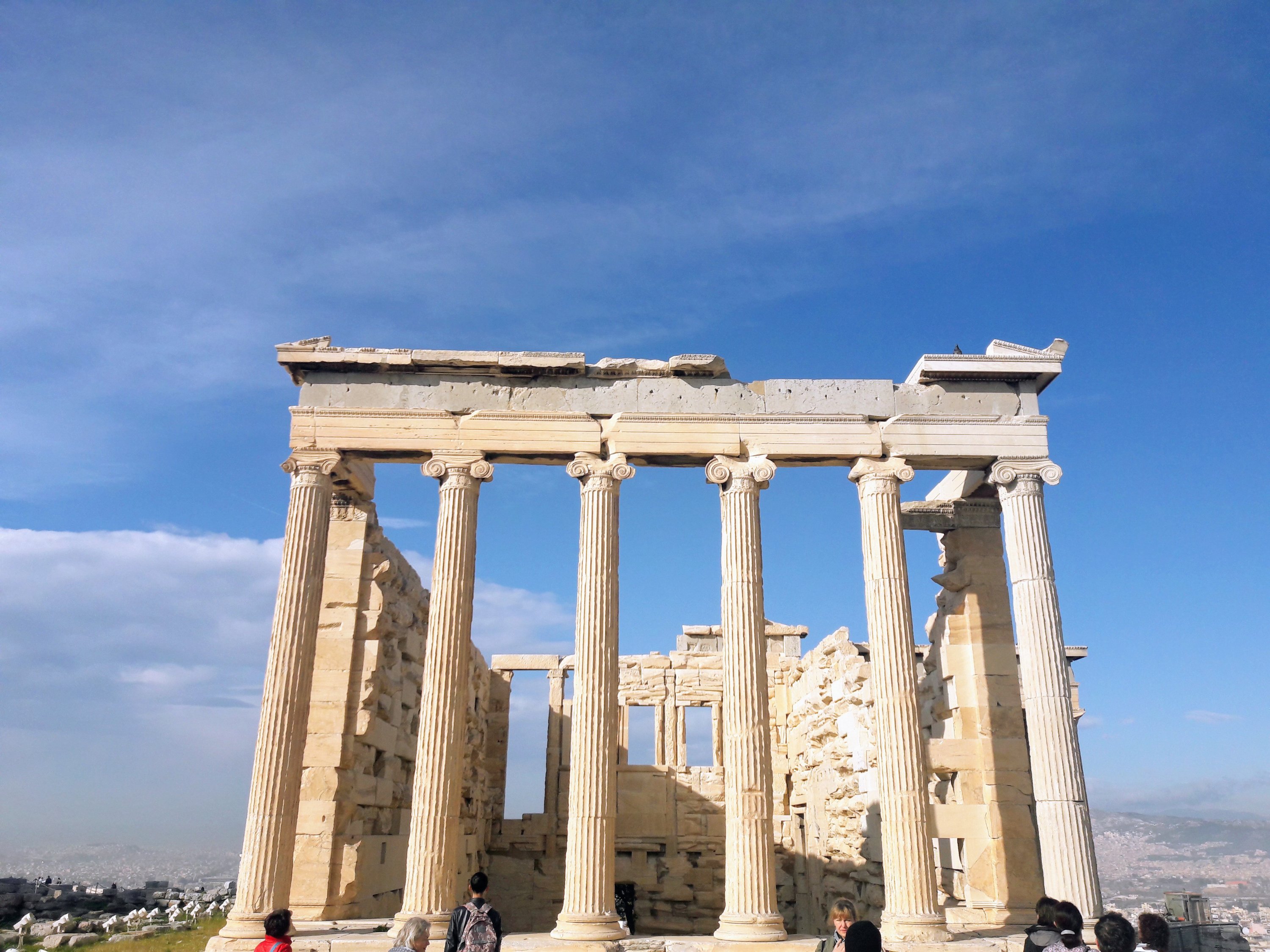Athens is the capital of Greece. It was also at the heart of Ancient Greece, a powerful civilization and empire. The city is still dominated by 5th-century BCE landmarks, including the Acropolis, a hilltop citadel topped with ancient buildings like the colonnaded Parthenon temple.
The Acropolis Museum, along with the National Archaeological Museum, preserves sculptures, vases, jewelry and more from Ancient Greece.

This post is about the ‘oldest’ exhibit at the National Archaeological Museum, Athens. It’s a Neolithic stone statuette of a human figure.
Before going in detail, let us know the location and age of this ancient statuette.
Basic Details : (As per the Museum)
Neolithic stone statuette of a human figure (NAM 16400), from the George Tsolozidis collection.
Provenance: unknown, (probably from Thessaly or Macedonia, Greece)
Period :Final Neolithic period (4500-3300 BCE)

In the National Archaeological Museum with its magnificent monumental sculptures of historic times, the smaller than life-size statuette of the human figure (36 cm in height) can hardly measure up to them.
Nevertheless, it clearly sums up the effort of the sculptor of the Final Neolithic period (4500-3300 BC) to carve in the round this rare work, out of such a hard rock as granite, without having at his disposal metal tools.

Stone figurines, as a rule, are scarce, usually of small size and made of soft rocks. Furthermore, only a small percentage (5%) of Neolithic figurines falls into the category of largesized ones, namely over 35 cm in height. The bird-like figurine has a markedly rounded belly, while its back is flat.
The legs, rendered as cylinders, are abruptly cut off, hampering the figure to stand stable. The dark grey surface is the end result of polishing, as indicated by the unworked facets of the pubic area, which display the original lighter colour of the stone.
Morphoplastic limitations, imposed by the raw material, are apparent in the asymmetric volume rendering of the belly. We are not in a position to know whether the lack of clear indication of sex is due to these limitations or whether it was the intention of the sculptor to create an asexual figure.
On one hand, the protruding belly could mark the state of pregnancy, but where are the breasts? The ‘asexual’, in this case, could indeed reflect avoidance of visual sex distinction, namely, it could be connected to gender and its role in the Neolithic society.
Female, male, asexual, bird-like, naturalistic, schematic, large or small ones, all figurines participate into a ritual ‘company’ embedded in the perceptions of the Neolithic culture, so much different than those of our own world!

We are going to post more about the Greek history/ Civilization along with the other ancient civilizations, stay tuned to our website and our Facebook page “The October Sky”.